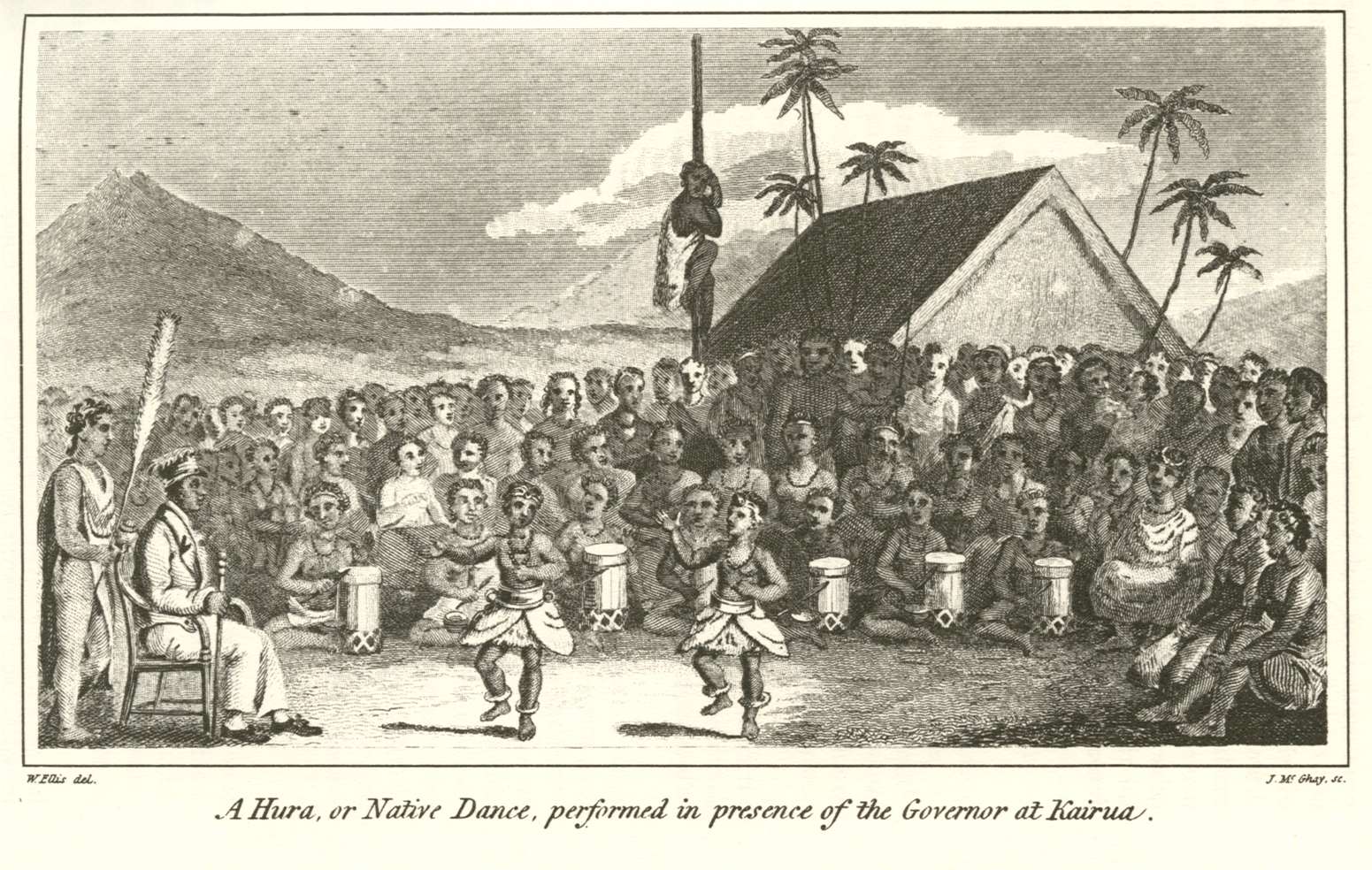Preparations in Honolulu to welcome the arrival of Liholiho included extended practice for a large hula performance with 270 dancers accompanied by musicians. The missionaries, who had frowned on the dancing from the beginning, were frustrated that students were required to miss school to practice. They also believed that hula included remnants of idol worship. In 1821, Kaumuali‘i agreed to stop hula on the Sabbath, but the conflict concerning hula extended beyond the early years, with the cultural practice continuing while the missionaries protested. At the same time, missionaries recorded their fascination with the coordination of movement and grace of performance.
— Journal of the Sandwich Island Mission, p. 32, dated April 10, 1820 on board the Thaddeus in Kailua-Kona
— Journal of the Sandwich Island Mission, p. 96, dated December 20, 1820 in Honolulu
— Esther T. Mookini, “Keopuolani: Sacred Wife, Queen Mother, 1778-1823,” p. 18, relating a story from the journal of missionary Charles Stewart

